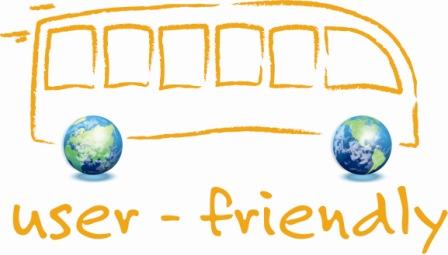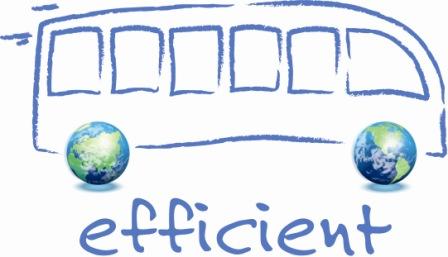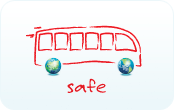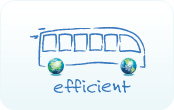// Development of night bus services |   Night bus services allow people who go out at night to leave their car at home and return home safely during night. Furthermore, employees who work late or early shifts can also make use of this offer. Night bus services allow people who go out at night to leave their car at home and return home safely during night. Furthermore, employees who work late or early shifts can also make use of this offer.
Example: In 2003, the Belgian city of Ghent introduced night bus services on six routes at 45 minute intervals between 23:30 and 2:30 on Friday and Saturday nights. This service was used by more than twice as many passengers as had been forecast. | For more information: IRU Eurochallenge awarded to Ghent night bus
| | // Provide security and protection |   Coach terminals often operate 24-hours a day and are placed where people congregate, especially during peak hours. That is why terminal operators together with the local police, should offer security and protection to terminal users to fight violence and to reduce criminality. Some of the measures to increase security in terminals include video surveillance, the presence of security officers, first aid offices, fire security and other preventive measures. Coach terminals often operate 24-hours a day and are placed where people congregate, especially during peak hours. That is why terminal operators together with the local police, should offer security and protection to terminal users to fight violence and to reduce criminality. Some of the measures to increase security in terminals include video surveillance, the presence of security officers, first aid offices, fire security and other preventive measures.
Permanently installed security cameras in buses, coaches and stations allows for rapid intervention in case of emergency and increases the number of passengers who feel safe when travelling by collective means of transport. The instalment of bright lights at bus and coach stops, in combination with security cameras, increases passengers’ comfort and makes them feel more secure. | For more information: Coach terminal as important element of transport infrastructure, Vaira Gromule, Irina Yatskiv Study of passenger transport by coach, Appendix C: Study of coach terminals, European Commission Study of passenger transport by coach, Final Report, European Commission Sustainable Urban Transport, Final report from the European project Trendsetter, pp.16-17 Get on Board: An agenda for improving personal security – case studies, Department for Transport What European framework for a sustainable urban transport, Green paper on urban transport, Position paper, UITP | | | // Including taxis in the collective transport system |    Integrating taxis in the collective transport chain, including in small towns and suburbs, may increase the total number of passengers making use of collective transport, in particular during evening hours. That is why the introduction of on-demand hail-shared taxis, which can be used with the normal ticket for collective means of transport at a reduced price, may motivate more people to use collective transport. Integrating taxis in the collective transport chain, including in small towns and suburbs, may increase the total number of passengers making use of collective transport, in particular during evening hours. That is why the introduction of on-demand hail-shared taxis, which can be used with the normal ticket for collective means of transport at a reduced price, may motivate more people to use collective transport.
Example: Austria has introduced, in various cities and towns, hail-shared taxis. In Vienna, such taxis operate on a couple of bus lines. The taxis serve the bus stations which are marked by a special sticker. The on-demand taxis mostly operate in the evening and during the night, and on some lines also during the day. The public transport ticket in Vienna can be used and the taxi operators are paid an agreed tariff on a kilometre basis by the Vienna operator “Wiener Linien”. The number of passengers using hail-shared taxis ranges from approximately 800 to 13 000 passengers yearly per line, depending on the bus route. This new system allows Vienna citizens to have direct access to collective means of transport, whilst improving cost-efficiency for operators. In the Limburg province in the Netherlands, the multimodal contract (Veolia Transport Nederland) includes urban services in Maastricht and Heerlen, trains, buses and taxis, fixed routes and on-demand services. 240 buses, 24 operator-owned trains and 300 taxis, owned or chartered by the operator, carry some 53 million passengers per year. The taxi option is important and divided into three specific types: taxis on fixed routes or “VKB” (maximum of 8 passengers), “Regiotaxi” with door-to-door services for people who don’t have access to regular public transport (all types of customers) and “Bellbus” which offers on-demand lines from bus stop to bus stop along virtual lines and pre-planned routes. | For more information: Das Taxi im ÖPNV. Richtig eingsetzt. Rund gelöst, Wirtschaftskammer Österreich Veolia Transport Nederland | // Co-operation of city tourism authorities and the local tourism industry |   The co-operation of the tourism boards and local tourism industry, such as hotels, tourism sites, catering and public facilities, allows marketing activities of bigger, wider and more intense scope. Participation of tourism authorities together with their local partners, in major travel fairs, conferences and workshops, constitutes not only an important activity to attract new operators, but also fosters already existing partnerships. The co-operation of the tourism boards and local tourism industry, such as hotels, tourism sites, catering and public facilities, allows marketing activities of bigger, wider and more intense scope. Participation of tourism authorities together with their local partners, in major travel fairs, conferences and workshops, constitutes not only an important activity to attract new operators, but also fosters already existing partnerships.
| For more information: Stockholm, Application for the IRU City Trophy 2009 Leipzig, IRU City Trophy Award 2005 |
|
|














